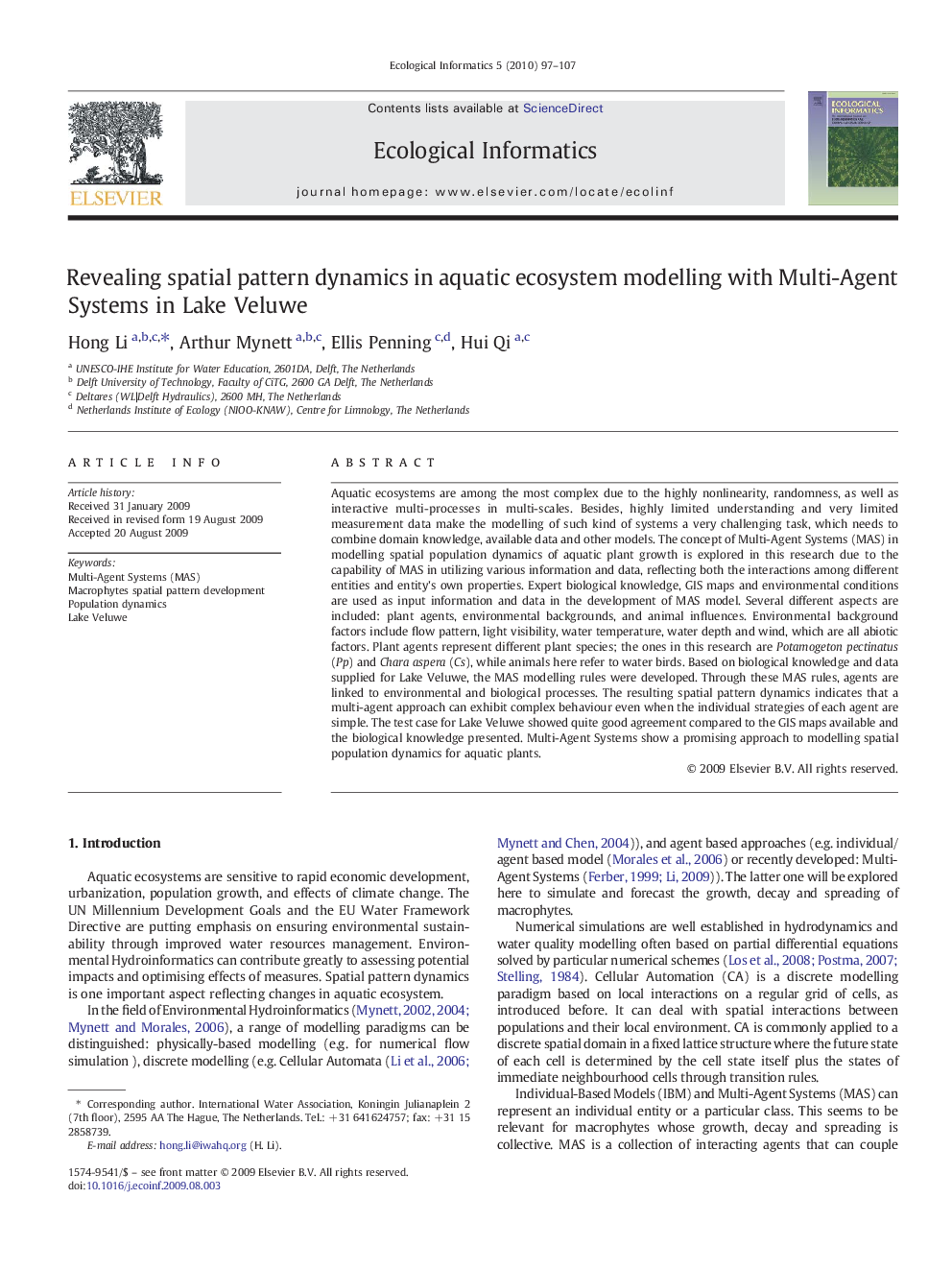| Article ID | Journal | Published Year | Pages | File Type |
|---|---|---|---|---|
| 4375339 | Ecological Informatics | 2010 | 11 Pages |
Aquatic ecosystems are among the most complex due to the highly nonlinearity, randomness, as well as interactive multi-processes in multi-scales. Besides, highly limited understanding and very limited measurement data make the modelling of such kind of systems a very challenging task, which needs to combine domain knowledge, available data and other models. The concept of Multi-Agent Systems (MAS) in modelling spatial population dynamics of aquatic plant growth is explored in this research due to the capability of MAS in utilizing various information and data, reflecting both the interactions among different entities and entity's own properties. Expert biological knowledge, GIS maps and environmental conditions are used as input information and data in the development of MAS model. Several different aspects are included: plant agents, environmental backgrounds, and animal influences. Environmental background factors include flow pattern, light visibility, water temperature, water depth and wind, which are all abiotic factors. Plant agents represent different plant species; the ones in this research are Potamogeton pectinatus (Pp) and Chara aspera (Cs), while animals here refer to water birds. Based on biological knowledge and data supplied for Lake Veluwe, the MAS modelling rules were developed. Through these MAS rules, agents are linked to environmental and biological processes. The resulting spatial pattern dynamics indicates that a multi-agent approach can exhibit complex behaviour even when the individual strategies of each agent are simple. The test case for Lake Veluwe showed quite good agreement compared to the GIS maps available and the biological knowledge presented. Multi-Agent Systems show a promising approach to modelling spatial population dynamics for aquatic plants.
